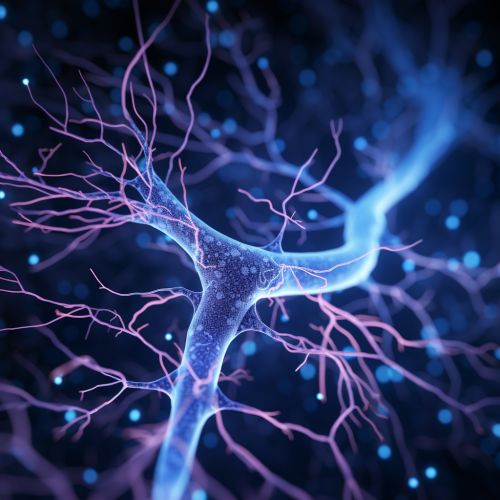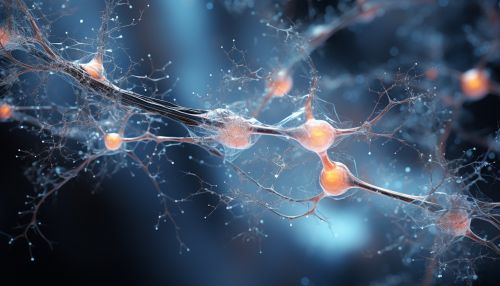Neurons
Introduction
Neurons, also known as nerve cells, are the fundamental units of the nervous system, the complex network that coordinates actions and sensory information by transmitting signals to and from different parts of an organism's body. They are specialized cells designed to transmit information to other nerve cells, muscle, or gland cells.


Structure and Function
Neurons are cells with a unique structure adapted to their function in the body. A typical neuron consists of a cell body (or soma), dendrites, and an axon. The cell body contains the nucleus and cytoplasm. The axon extends from the cell body and often gives rise to many smaller branches before ending at nerve terminals. Dendrites extend from the neuron cell body and receive messages from other neurons.
The function of neurons in the body is to receive, conduct, and transmit signals. The dendrites of a neuron receive information from sensory receptors or other neurons. This information is then passed down to the cell body and along the axon. The axon conducts the signal and passes it to the next neuron or to the end organ, such as a muscle or a gland.
Types of Neurons
There are three major types of neurons: sensory neurons, motor neurons, and interneurons.
Sensory neurons transmit signals from peripheral sensory receptors to the central nervous system. They are activated by physical phenomena such as light, sound, heat, and pressure.
Motor neurons transmit signals from the central nervous system to the effector cells and are responsible for muscle contractions and gland secretion.
Interneurons, or associative neurons, form connections between other neurons in the central nervous system. They are the most common type of neuron and are involved in the analysis of sensory inputs and motor outputs.
Neural Communication
Neurons communicate with each other through an electrochemical process. Signals at the dendrites of a neuron create an electrical charge that travels down the axon, in a process known as action potential. When the charge reaches the axon terminal, it triggers the release of neurotransmitters, chemicals that cross the synapse, the small gap between neurons. The neurotransmitters bind to receptors on the dendrites of the next neuron, continuing the signal.
Neurotransmitters
Neurotransmitters are the chemicals that transmit signals across a synapse from one neuron to another 'target' neuron, or to an effector cell. They play a crucial role in the function of neurons. Some common neurotransmitters include acetylcholine, dopamine, serotonin, and glutamate.
Neuroplasticity
Neuroplasticity, or brain plasticity, refers to the brain's ability to change and adapt as a result of experience. It is the process by which neural pathways are created, modified, and organized. Neuroplasticity is essential for learning new information, adapting to new situations, and recovering from brain injuries.
Conclusion
Neurons are the basic building blocks of the nervous system. They are responsible for receiving sensory input from the external world, sending motor commands to our muscles, and transforming and relaying the electrical signals at every step in between. Understanding the structure and function of neurons is fundamental to the fields of neuroscience, medicine, psychology, and many others.
